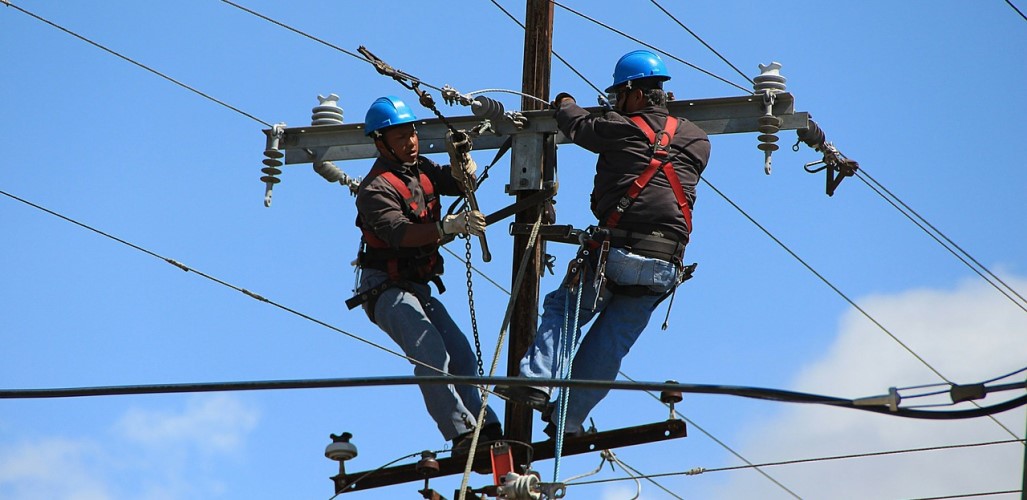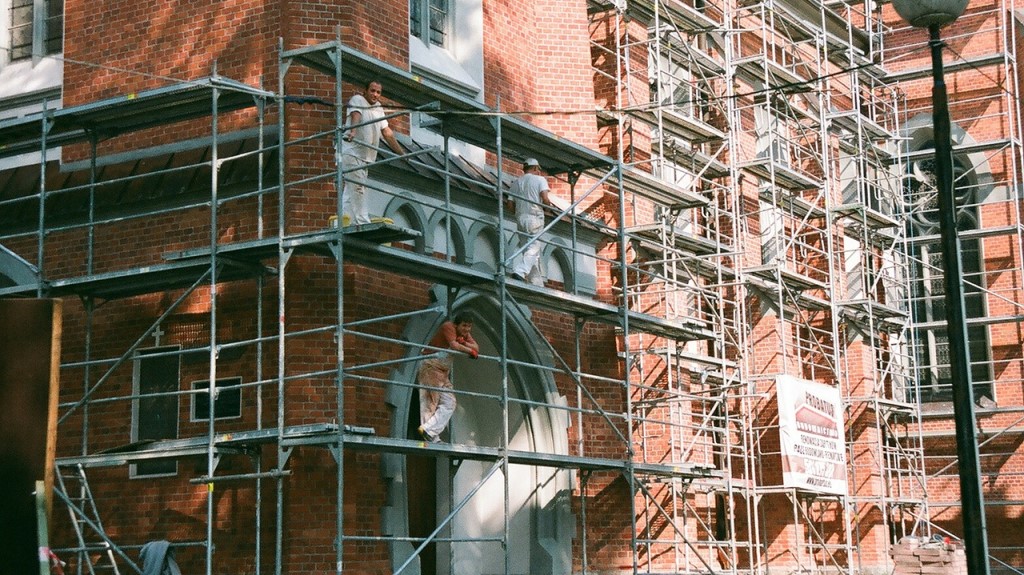Working at heights comes with a significant risk of falls, which is why it’s crucial that employees working in these conditions receive the proper training as mandated by the Ministry of Labour, Immigration, Training and Skills Development. In this article, we’ve created a Health and Safety quiz for you to better understand what is required. Test your knowledge by recording your answers before verifying if you have the correct information.
If you have any questions about the questions and answers listed below, be sure to contact your workplace’s HR or training departments or get professional training if you have any questions about the answers listed.
Working At Heights – What You Need To Know
If your job involves working at heights, its important to know the risks involved. This is why it’s crucial that employees working in the conditions receive the proper training as mandated by the Ministry of Labour, Immigration, Training, and Skills Development. Here are some of the main hazards to watch out for:
- Falls: This is the biggest concern by far! Even a fall from a relatively low height can cause serious harm.
- Falling Objects: Tools, materials, or debris dropped from above can injure workers below.
- Electrocution: Power lines or electrical equipment can pose a danger if not properly insulated or guarded.
- Weather Conditions: Strong winds, rain, ice, or snow can make working at heights more difficult and increase the risk of slips and falls.
- Slips, Trips, and Falls: Uneven surfaces, poor housekeeping (like spills), or improper footwear can all lead to slips and falls
Take the healthy and safety quiz below to see what you know about the Working At Heights Training.

Continue reading to take our health and safety quiz.
Working At Heights Health And Safety Quiz
Anyone working on a construction project who will be using fall protection equipment needs Chief Prevention Officer Approved (CPO) Working at Heights Training. This includes, but is not limited to:
- Travel restraint systems
- Fall restricting systems
- Fall arrest systems
- Safety nets
- Work belts
- Safety belts
Workers do not have to complete approved Working at Heights training if their workplaces are not covered by O. Reg. 213/91. There is a limited exemption for workers who are directly employed by an automobile manufacturer or assembler
Working at heights comes with a variety of fall hazards – anything that could cause a tumble. Watch out for:
- Missing guardrails or other fall protection equipment
- Misusing safety gear
- Lacking proper personal protection equipment (PPE)
- Slippery surfaces from spills or poor housekeeping
- Workers who haven’t received proper training
To remain CPO compliant, your Working at Heights Training certificate expires after 3 years. Renew your certification by taking a refresher course.

It's important to know the risks involved if your job entails working at heights.
Constructors and employers must ensure adequate fall protection system are being used where workers are exposed to a fall:
- Of more than 3 meters from one level to another
- Of 2.4 meters or more where work is on platforms, scaffolds, ramps, raised floors, mezzanines or balconies
- Of 1.2 meters or more if the work area is used as a path for a wheelbarrow or similar equipment
- Into, onto or through operating machinery, liquid, a hazardous substance, hazardous object, or an opening
Fall protection systems include: guardrails, travel restraint, fall arrest equipment or safety nets.

A proper Working at Heights training course will help you stay safe on the job!
- If practicable, a guardrail system should be used.
- If a guardrail system is not practicable, then a travel restraint system should be used.
- If a travel restraint system is not practicable, then a fall restricting system should be used.
- If a fall restricting system is not practicable, then a fall arrest system should be used.
- If a fall arrest system is not practicable, then a safety net should be used.
During inspections, CPO officials will verify:
- Fall Hazard Assessment: Employers have properly assessed fall risks.
- Fall Protection: Appropriate and compliant (National Standards of Canada) fall protection equipment is being used.
- Equipment Selection & Maintenance: Fall protection is chosen for specific tasks, used correctly, and maintained in good condition.
- Guardrail Removal Procedures: If guardrails are temporarily removed, alternative fall protection (preventing falls to ground, lower levels, or objects) is provided with clear warning signage and worker training.
- Portable Ladder Safety: Portable ladders are either securely fastened at top and bottom, held in place while used, or positioned with the correct incline (horizontal distance from top support to base is 1/4 to 1/3 of ladder length).
- Fall Protection Training: Workers using fall protection systems receive training on working at heights, the specific site conditions, and the relevant fall protection system (including manufacturer’s instructions).
- Also, workers’ training records should be available if requested.
The Chief Prevention Officer (CPO) plays a vital role in ensuring workplace safety in Ontario. Here’s a closer look at their key functions:
- Approving Training Programs: The CPO sets the standards for Working at Heights training programs and grants approval to qualified providers. This ensures all certified training programs meet the high standards set by the Occupational Health and Safety Act (OHSA).
- Shaping Ontario’s Safety Strategy: The CPO is responsible for developing Ontario’s overall occupational health and safety strategy. This strategy outlines key priorities and initiatives to keep workers safe.
- Reporting on Workplace Safety: The CPO prepares an annual report on the state of occupational health and safety in Ontario. This report provides valuable insights into workplace safety trends and helps identify areas for improvement.
- Promoting Workplace Safety: The CPO offers expert advice on preventing workplace injuries and occupational illnesses. They also propose changes to improve the funding and delivery of workplace safety services, ensuring all workers have the resources they need to stay safe.

If you need Working at Heights training after this health and safety quiz, book with ACUTE today!
Employers have three options to confirm a worker’s Working at Heights Training is valid:
- Proof of Completion Record: Accept a physical card issued by either the Chief Prevention Officer (CPO) or a CPO-approved training provider.
- Ministry Verification (Summer 2024): Coming Soon! With worker consent, access their training information through the Ministry’s secure certification management system (account required).
- Ministry Contact (With Consent): Obtain confirmation directly by contacting the Ministry of Labour with the worker’s permission.
You should choose a CPO-Approved Working at Heights Training course because of:
- Guaranteed Compliance: Training from non-approved providers won’t be recognized by the Ministry of Labour, Immigration, Training and Skills Development. By choosing a CPO-approved trainer like ACUTE, you’re guaranteed to meet all legal requirements and ensure your training is valid.
- Unmatched Quality: CPO-approved trainers go through a rigorous approval process. This means you can be confident you’ll receive high-quality, comprehensive training that covers all the essential aspects of working safely at heights.
Our Working At Heights Training equips you with the knowledge and skills to stay safe when working at elevated heights. Here’s what you can expect:
- Master the Rules: Get a clear understanding of Working At Heights legislation.
- Identify Hazards: Learn to recognize potential fall hazards in the workplace.
- Plan for Safety: Discover how to develop effective Safe Work Plans to assess and control these hazards.
- Fall Prevention & Protection: Explore a range of fall prevention strategies and become familiar with different fall protection equipment.
- Engage with Experts: Benefit from classroom interactions with experienced instructors who can answer your questions.
- Vivid Scenarios: Work through realistic tabletop exercises to solidify your learning.
- Detailed Resources: Utilize comprehensive handouts and informative videos for future reference.
- Test Your Knowledge: Regularly assess your understanding with an ongoing health and safety quiz provided throughout the course.
- Hands-on Practice: Gain practical experience through demonstrations and hands-on training sessions.
- Show What You Know: Demonstrate your competency through practical performance evaluations.

ACUTE offers CPO - Approved Working at Heights training.
Are you looking for Working At Heights Training after completing this health and safety quiz? Book a course with ACUTE Safety!
ACUTE Safety is committed to providing thorough health and safety training, on-site safety services and consulting services. Our friendly, caring local experts have more than 200 years of combined experience and want you to go home safe to your families.
We offer more than theoretical or abstract ideas. ACUTE offers solutions.
Contact us today to find out more about our training courses!
What Our Customers Are Saying…
We have relied on ACUTE for years to train our staff and keep them safe on the job site.
Bob, Millwrighting Company
Hours of Operation and Contact Information:
Monday-Friday: 8:00 AM – 5:00 PM
Saturday-Sunday: Closed
Phone: (519) 747-5075
Fax: (519) 747-4608
Email: info@acuteservices.com






